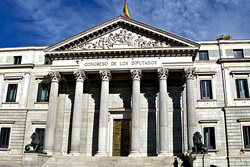
Back in February the Spanish government announced a proposal for a regulation of securities crowdfunding. The proposed rules, which Crowd Valley described into more details in this article in March, featured limitations on both the amount that could be raised by the issuer and the amount an individual could invest. The latter, in particular, was set to be at €3,000 per project, with a maximum of €6,000 per year.
Last week the Spanish Ministry of Economy declared that the cap on investment will be removed for professional investors, while a limit of €3,000 will remain for non-professional investors. Even though is not yet clear how a “professional investor” and "non-professional investor" will be defined - rumors say an yearly income of at least €100,000 is required. The Spanish crowdfunding ecosystem received the news with positive reactions and it now sees hope for the development of a strong alternative early stage finance sector.
This important change comes after the Spanish Crowdfunding Network delivered, a few months back, a 56 page document to the Government, asking for the removal of the investment limit. In fact, as showed by other European cases, for example Italy, where regulations for equity crowdfunding have been in place for already 10 months, but hardly no startup has even used this innovative mechanism to raise finance, a too restrictive approach may kill the potential of securities crowdfunding.
Whether the proposed regulation for Spanish securities crowdfunding will work better than other regulatory frameworks in the EU region, it is something we will only find out with time. In the meanwhile, Crowd Valley hopes that Spain’s change of approach towards crowdfunding can start the discussion and give reference for other regulators dealing with the same issues.
References
Barrera, A. (2014). Spain intends to lift some of the equity crowdfunding limitations. Tech.eu
Gonzalez, J.S. (2014). El Gobierno levanta los límites al ‘crowdfunding’ solo a los profesionales. El Paìs.com
Image credit to: Jose Javier Martin Espartosa. http://bit.ly/1gfKKdx
This important change comes after the Spanish Crowdfunding Network delivered, a few months back, a 56 page document to the Government, asking for the removal of the investment limit. In fact, as showed by other European cases, for example Italy, where regulations for equity crowdfunding have been in place for already 10 months, but hardly no startup has even used this innovative mechanism to raise finance, a too restrictive approach may kill the potential of securities crowdfunding.
Whether the proposed regulation for Spanish securities crowdfunding will work better than other regulatory frameworks in the EU region, it is something we will only find out with time. In the meanwhile, Crowd Valley hopes that Spain’s change of approach towards crowdfunding can start the discussion and give reference for other regulators dealing with the same issues.
References
Barrera, A. (2014). Spain intends to lift some of the equity crowdfunding limitations. Tech.eu
Gonzalez, J.S. (2014). El Gobierno levanta los límites al ‘crowdfunding’ solo a los profesionales. El Paìs.com
Image credit to: Jose Javier Martin Espartosa. http://bit.ly/1gfKKdx

About the author - Irene Tordera
Born and raised in Milan, Italy, Irene is an International Business graduate, with a strong interest for innovative ideas that can simplify our lives.
During her studies, she co-founded an online community for sportspeople and worked in marketing positions at Ogilvy & Mather Advertising and at the European Business Angel Network, in Brussels. She is a passionate blogger about crowdfunding and the startup ecosystem.
Born and raised in Milan, Italy, Irene is an International Business graduate, with a strong interest for innovative ideas that can simplify our lives.
During her studies, she co-founded an online community for sportspeople and worked in marketing positions at Ogilvy & Mather Advertising and at the European Business Angel Network, in Brussels. She is a passionate blogger about crowdfunding and the startup ecosystem.

 RSS Feed
RSS Feed